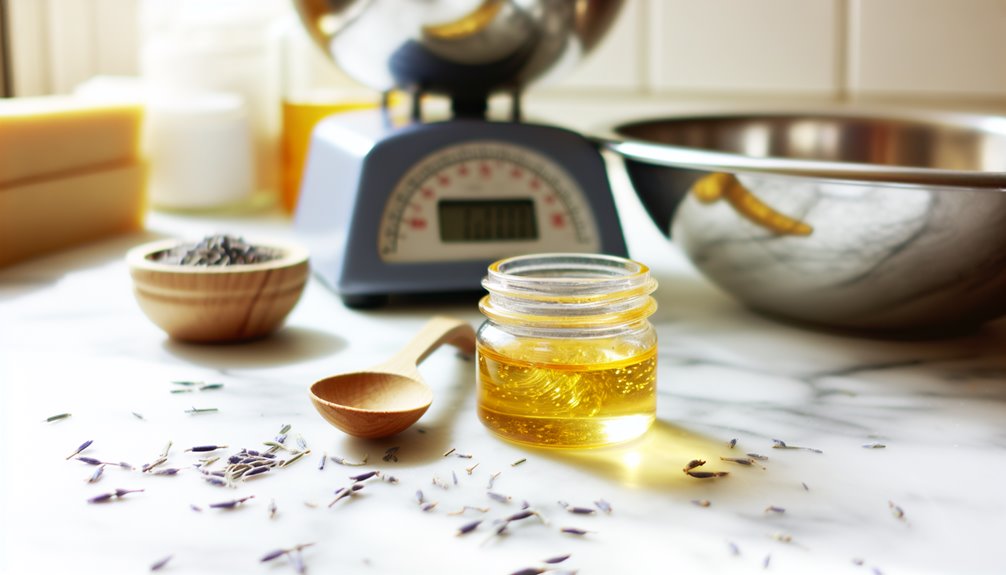Adding lanolin to a soap recipe enhances moisturizing and emollient properties. It is a natural wax that locks in moisture and creates a protective barrier for the skin. To incorporate it, use pharmaceutical-grade lanolin and add it at temperatures below 185°F, typically at 1% to 10% of total oils. This balance is essential to prevent over-fatting while ensuring ideal lather and texture. More insights on achieving the perfect soap formulation can be found ahead.
What Is Lanolin and Its Benefits for Soap
Lanolin, a natural wax derived from sheep’s wool, has gained popularity in soap making due to its unique moisturizing properties.
Known for its emollient qualities, lanolin effectively locks in moisture, making it beneficial for dry and sensitive skin. The lanolin properties include the ability to create a protective barrier, preventing water loss while allowing the skin to breathe.
Additionally, it is rich in vitamins and fatty acids, promoting skin healing and nourishment. As a result, incorporating lanolin into soap formulations can enhance their moisturizing capabilities, leading to smoother, healthier skin for users.
Its skin benefits make it a sought-after ingredient.
How to Incorporate Lanolin Into Your Soap Recipe
Incorporating lanolin into a soap recipe can elevate the moisturizing properties of the final product.
To begin, proper lanolin sourcing is essential; choose high-quality, pharmaceutical-grade lanolin for best results.
During the soap formulation process, lanolin should be added at a temperature below 185°F to maintain its beneficial properties. Typically, it is blended with oils or butters before integrating into the base.
A recommended amount is between 1% to 10% of the total oils used, depending on the desired moisturizing effect.
Careful measurement and thorough mixing guarantee even distribution, enhancing the soap’s texture and hydration capabilities.
Tips for Achieving the Perfect Texture and Lather
Achieving the perfect texture and lather in soap requires careful attention to the ingredients and their proportions.
To guarantee texture enhancement, it is essential to balance oils with different properties; hard oils contribute firmness while soft oils add creaminess. Incorporating lanolin can greatly aid in achieving a silky texture.
For lather improvement, choose oils known for their bubbly qualities, such as coconut or castor oil. Additionally, incorporating a small amount of sugar or honey can bolster lather.
Monitoring the soap’s water content during saponification also plays a fundamental role in achieving the desired consistency and lather qualities in the final product.
Balancing Lanolin With Other Ingredients in Soap Making
When balancing lanolin with other ingredients in soap making, it is vital to contemplate the unique properties of each component.
Lanolin, known for its moisturizing qualities and emollient properties, can enhance the soap’s texture and skin feel. However, careful consideration of ingredient ratios is imperative to avoid over-fatting the recipe.
A typical approach involves using lanolin in moderation, often around 5-10% of the total oils, depending on the desired outcome. This balance guarantees that the soap maintains adequate lather and cleansing abilities while benefiting from lanolin’s nourishing effects, ultimately resulting in a well-rounded final product.



